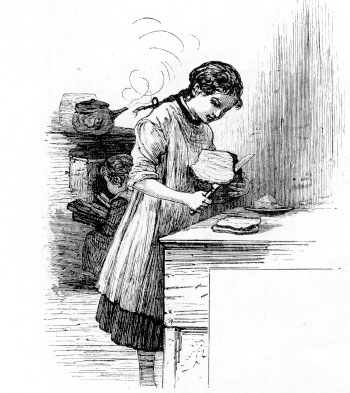Mary Lincoln’s thirded bread
Mary Lincoln’s thirded bread hews closer to seventeenth century New England tradition than Fannie Farmer’s better known but recognizably nineteenth century adaptation. Everything about Miss Farmer is better known than anything about Mrs. Lincoln but her earlier recipes display a concise charm often lacking from Farmer versions. This one is from the 1901 edition of Mrs. Lincoln’s Boston Cook Book , which managed to remain in print after her protégé’s book, universally known in New England simply as Fannie Farmer , became the standard text for generations, first of Yankee and then of American cooks.
 Mrs. Lincoln’s recipe very nearly in full:
Mrs. Lincoln’s recipe very nearly in full:
- 1 cup white flour
- 1 cup rye flour
- 1 cup yellow corn meal
- 1 teaspoonful salt
- 3 Tablespoonfuls salt
- 1 packet bakers’ yeast
Preheat the oven to 375°.
“Mix with milk (scalded and cooled) till thick enough to be shaped. Let it rise until it cracks open. Put into a brickloaf pan, and well risen bake it one hour.”
Notes:
-The addition of sugar, like the molasses favored by Miss Farmer for her own ‘third’ (thirded is the older and more beguiling usage) bread, is inauthentic in seventeenth century terms.
-‘Brickloaf’ is an evocative description of what we consider a standard sandwich or cottage loaf pan.
-Mrs. Lincoln does not indicate just how well well risen should be in terms of volume but the instruction to let the dough rise “until it cracks open” is so stylish and descriptive that cookbooks ought to revert to the usage.
-Judging from the stains in my own 1901 edition, the thirded bread and recipes for brown bread were popular choice at the outset of the twentieth century in New England.

